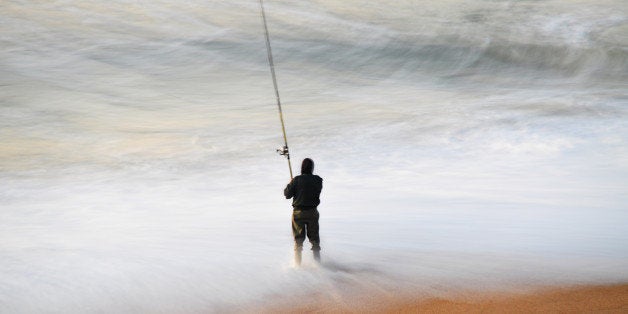
It may sound like a tall order: By 2020, the U.N. Sustainable Development Goal for oceans calls on the world to "manage and protect marine and coastal ecosystems...effectively regulate harvesting...end overfishing...restore fish stocks in the shortest time feasible...[and] produce maximum sustainable yield."
Can we really meet those targets in five years? I believe we can. Promising signs, backed by groundbreaking research, show how quickly we can replenish the world's seas while providing enough seafood to feed an additional 600 million people at today's per capita consumption rate -- if we get the incentives right.
The stakes keep rising. Forty percent of the global population live within 60 miles of salt water. Many small coastal communities rely on ocean fisheries, which add $270 billion to global GDP, support 260 million livelihoods, and provide protein for nearly 3 billion people. Meanwhile, acidification, pollution, rising tides, and overfishing converge to undermine seafood harvests. Unless we reverse this spiral, we face a serious food crisis.
So how can I remain optimistic? Because I've seen a simple idea known as secure fishing rights help catalyze dramatic ocean progress.
In the past, officials tried to manage overfishing by piling up regulations on how, when, where, and with what people could fish. But as fisheries declined, risks grew, tensions mounted, and the old flawed systems began to give way to a more effective approach.
Environmental Defense Fund and our partners encouraged governments to cooperate with fishing communities to design clearly defined rights, responsibilities and rewards from the bottom up.
It has worked.
In areas where secure fishing rights have been adopted, the results speak for themselves. For example, the U.S. red snapper catch in the Gulf of Mexico has more than doubled since a form of secure fishing rights called "catch shares" was put in place in 2007. Revenues have increased by 108% in that time, and today there are three times more red snapper in the ocean. Why? Because fishermen have become long-term stewards who found new ways to comply with harvest targets. They discovered how to "fish smarter, not harder."
Today, catch-share communities land more than two-thirds of all fish caught in U.S. federal waters with nearly 100 percent compliance. Here, the number of overexploited stocks fell from 92 to 37, while the number of rebuilt stocks expanded. Catch-share fisheries have been widely certified "sustainable" and have resulted in rebuilding badly depleted fish populations decades ahead of schedule. The reward is rising fish abundances, a 23% increase in fishing jobs in recent years, and revenues are up 30%.
It's one of the great environmental success stories of our era: the rising tide of catch shares is lifting all vessels.
The SDG targets for oceans rightly focus on the most vulnerable communities in the least developed countries. Here, too, fishing rights hold tremendous potential.
In Belize, overfishing caused sharp declines in reef fish and conch; for some harvesters, spiny-lobster harvests shrank from 200 to 20 per day. But incentives changed after EDF and our allies introduced secure rights, known as "managed access." Early adopting fishermen oversaw a dramatic decline in illegal fishing and as a result their fishing businesses thrived. Word spread up the coast until nearly all 3,000 fishermen wanted the same opportunities, and recently Belize's cabinet voted to expand the approach nationwide.
To recover Namibia's depleted fishing grounds, the government secured access rights for its indigenous local fleets. There's still work to do in the years ahead, but since the transition, Namibia's harvesters have helped increase the value of fish 40%, generate 14,000 jobs, and build trust and confidence in coastal communities.
From such examples, EDF has distilled basic principles. Now, to scale up, we are forging partnerships in Europe, Asia and Latin America to help governments and coastal communities adapt fishing rights to their unique needs. For example, two municipalities in the Philippines just approved new sustainable-fishing programs with the help of our Fish Forever partnership with Rare and the University of California-Santa Barbara.
Momentum is building. Last year, the world's fishing nations made secure fishing rights a cornerstone of the UN Food and Agriculture Organization's Guidelines on Securing Sustainable Small Scale Fisheries in the Context of Food Security and Poverty. A tipping point is in sight. If this rights-based renaissance spreads to a dozen key countries, bringing the total to 70% of the global catch, sustainable fishing could take hold worldwide.
There's no time to lose. By 2030, 8.5 billion people will compete for more food from already stretched resources both on land and in the sea.
Yet if fishing rights reforms are adopted, preliminary research projects a real sea change that is affordable and fast. In 10 years, we could recover 79% of the world's fisheries and increase profits in the fishing sector by $51 billion USD (115%) a year compared to today.
We can meet the U.N.'s goals and targets on time by offering seafood harvesters a stake in the recovery of their fisheries. With secure rights and incentives, we can revive coastal communities, feed hungry families, and bring our oceans back to life for all, forever.
This post is part of a series produced by The Huffington Post, "What's Working: Sustainable Development Goals," in conjunction with the United Nations' Sustainable Development Goals (SDGs). The proposed set of milestones will be the subject of discussion at the UN General Assembly meeting on Sept. 25-27, 2015 in New York. The goals, which will replace the UN's Millennium Development Goals (2000-2015), cover 17 key areas of development -- including poverty, hunger, health, education, and gender equality, among many others. As part of The Huffington Post's commitment to solutions-oriented journalism, this What's Working SDG blog series will focus on one goal every weekday in September. This post addresses Goal 14.
